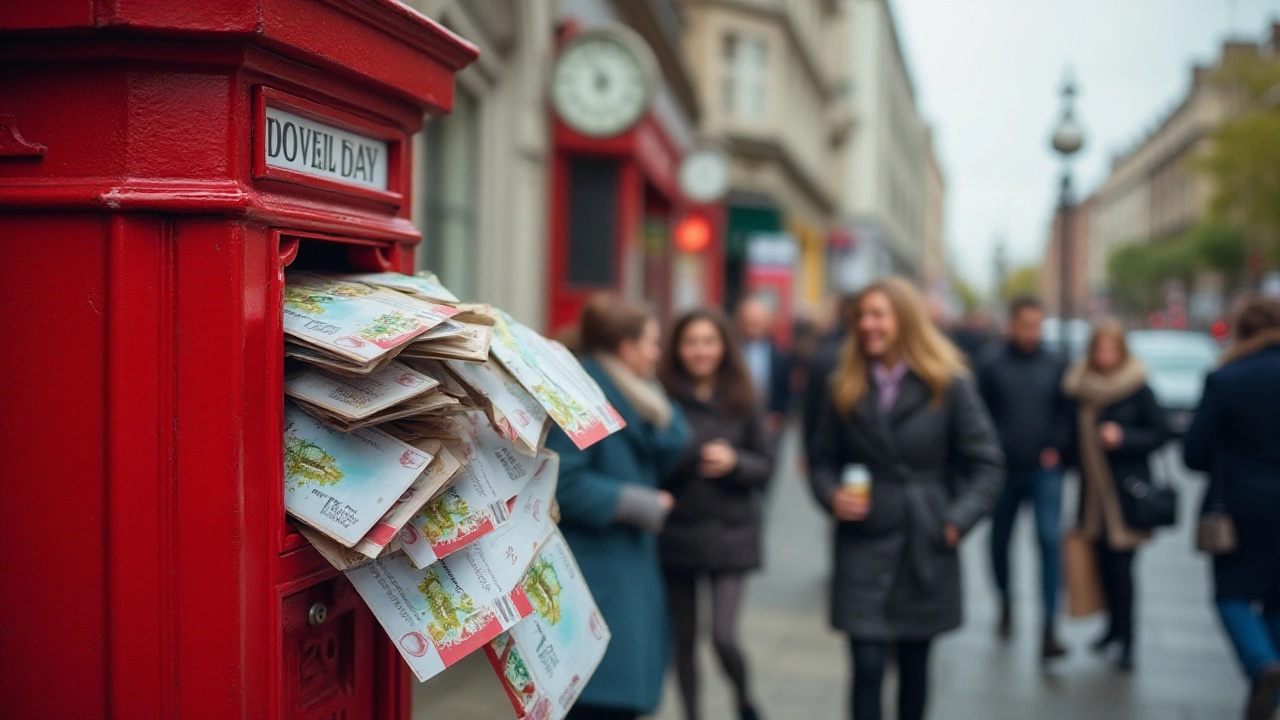When planning a wedding, timing holds a pivotal role, especially concerning save the dates. These cards set the stage, giving guests an early glimpse of your big day. Ideally, save the dates are sent out well ahead of time, allowing loved ones to mark their calendars.
But what if, amidst bustling preparations, three months creep up and the cards are yet to be sent? Is this timeframe considered too tardy? Perhaps not necessarily. While it might prompt a bit of a rush, there are ways to make it work without losing your peace of mind.
- Importance of Save the Dates
- Ideal Timeline for Sending
- Factors Influencing Timing
- Tips for Late Invitations
- Alternatives and Solutions
Importance of Save the Dates
Sending out save the dates is more than a mere ritual in the landscape of wedding preparations. These initial invitations serve as a heartfelt signal to your loved ones, marking the commencement of the journey to your big day. The purpose is to ensure your guests have ample time to plan their attendance, aligning their personal schedules with your special moment. It is particularly essential when hosting a destination wedding or when numerous guests reside out of town. Establishing an early connection is crucial to gather the people you cherish most under one roof for one of life's greatest milestones.
Consider this: modern life is bustling with responsibilities, and a well-timed heads-up can transform your save the date into an appreciated gesture, rather than another item in the mail. This is especially true in today's world where seasonal peaks, such as summer getaways and holiday periods, make calendars busier than ever. By respecting the timeframe, you increase the likelihood that invitees will eagerly reserve the day to celebrate with you. Let’s not forget, weddings often involve logistics like travel plans and accommodations, and an on-time save the date offers a head start in organizing these elements.
Wedding planning bodies usually suggest sending out save the dates six to twelve months prior to the event. This is particularly advised for weddings that involve significant travel. The anticipation is like an extended warm-up; guests appreciate having it on their radar long before the actual invitation drops. A statistic from WeddingWire indicates that 45% of couples marry in the warmer months of May through August, underscoring the need for advanced notification during popular wedding seasons.
Imagine receiving a save the date for an event a year away—such foresight not only gives you a sense of inclusion but also plants the seed of anticipation. It might even allow for better planning around holidays or professional commitments. As Mary Smith, a renowned wedding planner, says,
"The excitement of a wedding begins long before the 'I do's,' and a save the date card is like the spark that lights the flame of joy."The simple act of sending these pre-invitations not only conveys upcoming details but also shares a heartfelt sentiment and joy surrounding the union.
Ideal Timeline for Sending
When considering the ideal timeline for sending out save the dates, many factors come into play. Typically, wedding planners suggest that these notices be sent six to eight months before the wedding day. This timeframe gives guests enough time to plan their travel, save money if needed, and make accommodations, especially if the wedding falls during a busy season or involves travel to a distant locale. The earlier you send these out, the more likely your invitees will mark your wedding as a priority, avoiding potential scheduling conflicts.
But let's delve deeper. For destination weddings or nuptials happening during a popular season like the holidays or summer, it's prudent to give your guests a heads-up even earlier—around eight to twelve months in advance. They might need additional time for things like renewing their passports, booking flights, and securing lodging. This nuanced strategy not only shows thoughtfulness but demonstrates wise planning, as it helps avoid last-minute surprises or regrets from guests who couldn't secure a spot. Wedding planning often involves a cascade of logistics and informing your loved ones early helps keep everything on track.
If your wedding is local and most guests reside nearby, releasing save the dates closer to the six-month mark is usually sufficient. This timeline is tailored to situations where intricate travel planning isn't as critical. It's important to assess the nature of your guest list, too—elderly family members and those with stringent work schedules might appreciate a longer notice period, even for closer events.
In the words of renowned wedding expert David Tutera,
"Timeliness shows respect for your guests. The more time they have to prepare, the more relaxed and joyful they will be on your special day."From a logistical standpoint, this perspective encourages a slightly earlier dispatch to ensure that guests feel involved and excited rather than rushed and anxious.
The data from a 2021 survey conducted by The Knot indicates that nearly 40% of couples still send out save the dates only four to six months ahead, and this has sometimes led to lower guest attendance. As wedding planning evolves, so does guest expectation. Sending them at the opportune time aligns with the ultimate goal of crafting a seamless wedding experience, where your invited entourage feels as much a part of the celebration as any other element of the day.

Factors Influencing Timing
The process of shipping out wedding invitations, particularly save the dates, is commonly affected by several pivotal factors that call for consideration. Various elements, such as the type of wedding planned, the location, and guest considerations, each play a significant role in shaping the ideal timeline for sending these announcements. Couples often find themselves pondering whether guests will need ample time to prepare travel arrangements, especially for destination weddings, which garners the need for advance notice of six to eight months as customary.
Alongside location, the time of year plays an influential role in deciding the distribution time frame. Weddings set during peak wedding seasons, such as from May to October, typically necessitate advance announcements to stand out amid a multitude of scheduled events. These months are renowned for their high demand for venues and services, thereby encouraging a well-structured plan to secure guest attendance. Conversely, off-peak times may afford a more lenient schedule of four to six months notice.
"Sending save the dates is a pivotal step in wedding planning, especially for destination weddings or peak seasons," according to Tanya Lawrence, wedding planner and author of 'The Perfect Day.' She notes the importance of giving guests time to organize travel and accommodations without stress.
Family and cultural commitments can also sway the timing of these vital cards. Families with significant commitments, traditions, or prior engagements may require wider scheduling gaps to ensure they can attend. It is considerate of the couple to gauge the availability of key relatives and friends to throw a successful celebration. Toning the dynamic between personal circles and the external factors can drive the decision, influencing whether sending save the dates, three months out, would be perceived as hasty or tardy.
Technology now offers couples more flexibility, where digital save the dates provide an expediency traditional methods may lack. The use of social media or wedding websites helps eliminate the postal delay, as these methods can swiftly bridge the communication gap. Not only do they allow couples to bypass geographic hurdles, but they also cater to eco-friendly preferences. That makes them an attractive option for characteristics efficient wedding planning while maintaining modern considerations.
Ultimately, the timing for distributing save the dates should align with the couple's comfort level and their guests' needs. Whatever approach is chosen, thorough communication ensures that everyone remains informed and excited about the upcoming event. By weighing in these impactful factors, couples can determine a timeline that embodies both sense and sensibility for making lasting memories without sacrificing convenience.
Tips for Late Invitations
There's a swirl of excitement and numerous tasks in the air as wedding plans unfold, yet life happens, and sometimes sending out wedding save the dates may slip into the three-month mark. But, fear not! It's possible to navigate these waters with grace and a sprinkle of savvy tactics. Embracing a proactive approach, the first move you can make is to prioritize communication. Reach out to guests through phone calls or personalized emails, letting them know to keep the date free. This personal touch not only conveys the details directly but also adds a more intimate note, showing your appreciation for their trouble in making arrangements to attend your wedding.
Delving further into this adventure, dive into creativity with your wedding invitations. Leverage the digital realm, as e-invites are not only economical but ultra-fast. Opt for a beautifully designed digital save the date, which can be emailed instantly and allows for tracking who has received and opened it. Meanwhile, prepare your traditional paper invitations to follow suit in tempo, sparing no time to ensure delivery. A notable aspect is to harness social media power, especially necessary for tech-savvy guests. Creating a private group or event page efficiently keeps everyone posted on any updates or changes.
A solution worth considering for certain scenarios, particularly destination weddings, involves compressing the save the date and invitation into one comprehensive card. This time-effective measure gives guests ample information without the need for multiple correspondences. Echoing the words of renowned wedding planner Mindy Weiss, who says,
"A well-timed message resonates longer than a prolonged silence."It's a gentle reminder of the power of timeliness over perfection. Moreover, if any close relatives or friends prioritize, dispatch courier services for overnight delivery; it’s a fast track to their hands, albeit slightly pricy.
Understanding that not every guest will be tech-friendly, it's considerate to provide multiple channels for RSVP responses. From online platforms offering one-click confirmations to a phone line set up purely for collecting replies, these elements foster inclusivity. By setting a clear RSVP deadline, usually a bit earlier than tradition demands, it offers a cushion to finalize logistics—whether it's catering numbers or seating charts. And let's not overlook the appeal an engaging image or theme can add to your invitation, making it memorable in a sea of paper and pixels.
Ultimately, while three months might feel a little tight in terms of timing, employing strategies with thoughtful care and open communication bridges the gap between expectation and reality. By addressing the situation with both pragmatism and creativity, it transforms a hiccup into an opportunity to express personal style and maintain cordial relations with invitees. In so doing, the seemingly daunting task of late invitations becomes another cherished chapter in the vibrant memoir of your wedding planning journey.

Alternatives and Solutions
Wedding planning can quickly become a whirlwind, and sometimes you might find yourself debating whether it's too late to send out your save the dates. If your situation has reached this point, fret not, for there are several alternatives and solutions to keep everything on track. One pragmatic option is to go digital. In recent times, digital save-the-dates have become more acceptable, given their convenience and quick turnaround. Not only can you send them at a moment's notice, but they're also a green option, saving paper and postage. Consider creating a visually appealing e-card or an interactive save-the-date email that captures the essence of your wedding theme, and ensures the message reaches your guests swiftly.
Another approach is utilizing social media. Many couples have used platforms such as Facebook or Instagram to communicate save-the-date announcements when they're on a tight timeline. Creating a private event page or group can effectively centralize all announcements and information related to the wedding. Social media might reduce formality, yet it ensures almost immediate communication with those on your guest list. Experts suggest providing critical details such as the date, location, and your wedding website for more information. According to Calla Gold, a seasoned wedding planner, "Today's couples are redefining wedding norms. Digital solutions offer not just a fallback, but a versatile tool that embraces our digital age."
An incredibly helpful strategy is focusing on your wedding website. If your invites are running late, ensure your wedding website is fully stocked with necessary details. This often includes travel arrangements, accommodations, and a schedule of events. Your friends and family will appreciate having one reliable source for all things wedding-related. Inform your guests about the availability of your wedding website and encourage them to visit for updates on the event. This may be particularly useful for destination weddings, coordinating traveling guests more efficiently.
For those wishing to stick with tradition, consider sending the save-the-dates and invitations together. This may be unconventional, but mailing these simultaneously can save time and keep things organized. If you opt for this path, use express postal services. It ensures timely delivery, crucial when dealing with last-minute arrangements. You might later follow up with personalized calls or messages to confirm receipt, adding a personal touch that stands out.
Lastly, don't underestimate the impact of strong communication. If your guests are well-connected and informed about your plans, the absence of a physical save-the-date becomes less jarring. Proactively communicate through family and friends, spreading the news by word of mouth. Moreover, keeping an open line for queries ensures no one is left confused or uninformed. Statistics show that word of mouth is one of the most trusted methods for spreading information, even in this digital era, backed by research suggesting over 80% trust in personal recommendations. Thus, these options not only address timing issues but offer fresh solutions in step with modern trends.
